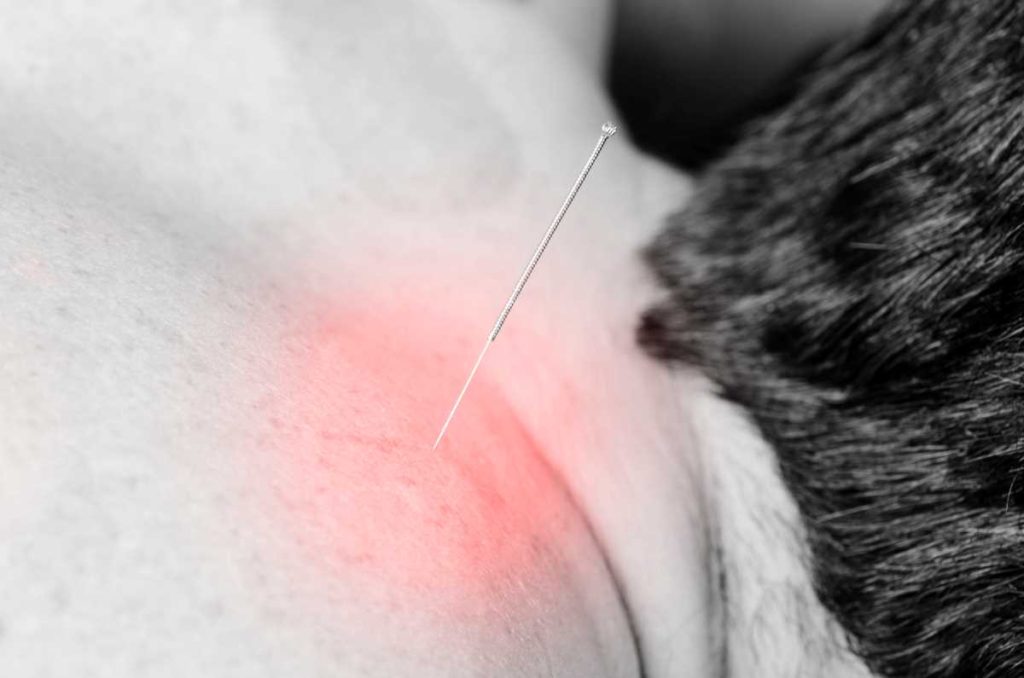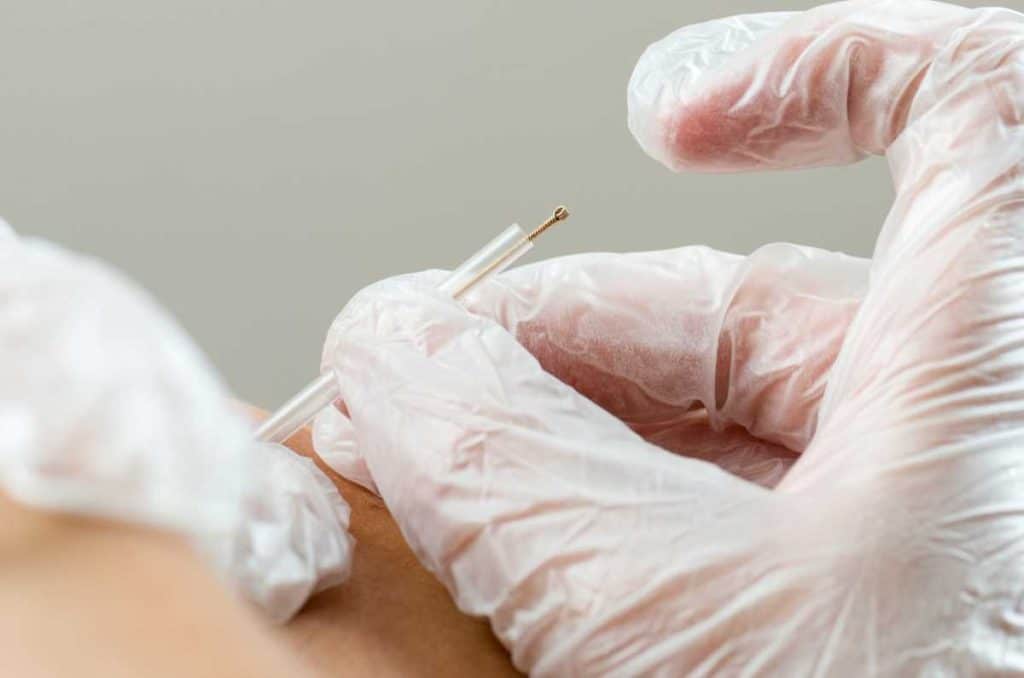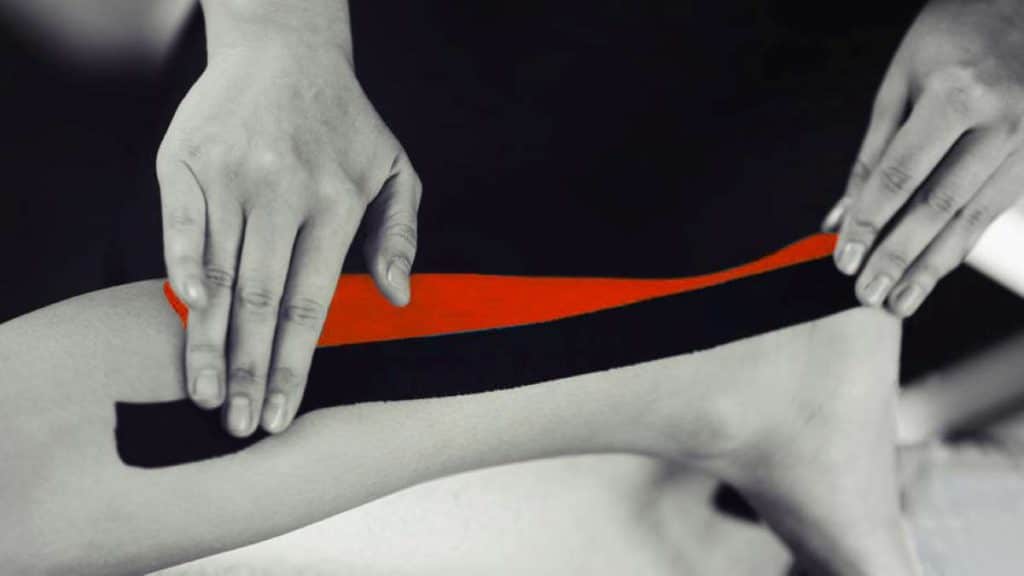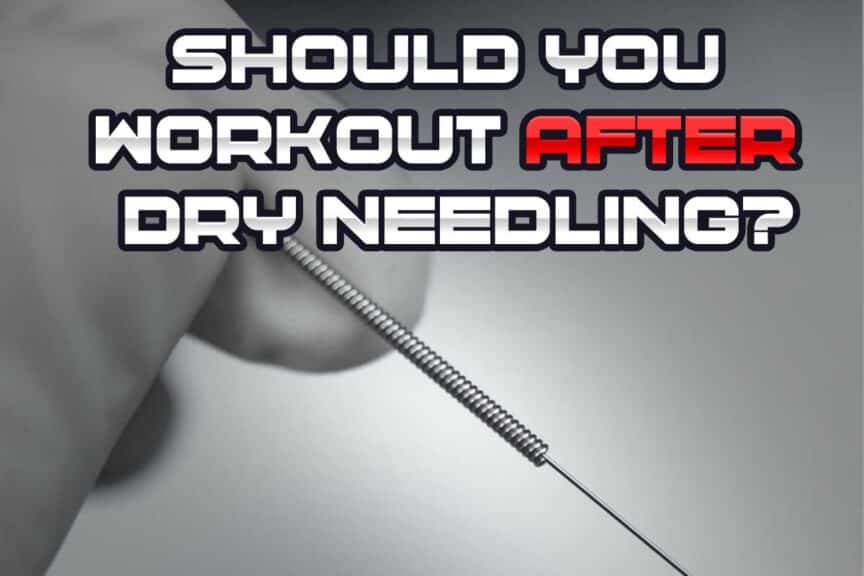Dry needling, often referred to as IMS (Intra Muscular Stimulation) is a therapeutic treatment technique that many healthcare professionals use as a means to decrease muscle tension, reduce or eliminate trigger points and help restore mobility to otherwise tight muscles. However, if you find yourself wondering if you can workout right after an IMS session, you’re not alone as many other people often have this same question.
While there’s really no catastrophic harm that can come from working out right after having your muscles dry needled, it will really depend on a few key factors as to whether or not doing so right after an IMS session may be a good idea for you. Your exercise intensity, volume and underlying condition all need to be taken into account if you want to workout right after undergoing IMS.
NOTE: The above paragraph is based on the assumption that an individual is receiving IMS simply to reduce muscle tension and that there are no other underlying conditions that need to be considered (such as tendinopathy, mechanical muscle strain, etc.) within the targeted muscles. For best results, follow the advice of the healthcare professional performing your IMS.

If you’re interested in learning the specific factors you should keep in mind if wanting to workout after an IMS session, then keep on reading, as I will cover these factors in detail below.
Disclaimer: While I am a physical therapist, I am not YOUR physical therapist. As a result, I cannot tell you whether or not any treatments and/or actions mentioned on this website may or may not be appropriate for you, including all aspects pertaining to IMS treatment. By following any information within this post, you are doing so at your own risk. You are advised to seek appropriate medical advice for any pain you may be experiencing.
Article Contents (Quick links)
Click on any of the article contents below to instantly jump to that particular section.
- A very brief background on IMS
- Potential for muscle soreness after IMS
- Potential for muscle fatigue after IMS
- Strategies for working out after IMS
- Concluding remarks
The application and background on dry needling isn’t covered to any extensive detail within this article, but I will provide a very brief overview of it so that the main points of this article will make sense.
A very brief background on IMS treatment
IMS treatment involves an appropriately credentialed healthcare professional reducing muscle tension or knots (often referred to as trigger points) with the use of a small filament wire. The treating therapist begins by palpating (using their hands to feel) tight muscles, often which feel like a tight, rope-like band of muscle tissue. These ares are often painful when pressed.
If it’s an appropriate area to do so, the practitioner will quickly insert a sterilized, fine filament wire through the skin and into the desired muscle(s). The professional will usually then piston the filament up and down a number of times in order to create a “twitch response” in the muscle. Once this occurs, the muscle relaxes and much of the trigger point dissipates.
If you’re looking for some scientific articles to read through regarding the theoretical constructs and effects of dry needling, here’s a few articles simply to get your feet wet:
(Note: the following links take you to the respective scientific paper)
IMS changing the chemical environment of trigger points (Shah, et al., 2005)
IMS in the treatment of generalized musculoskeletal pain (Kalichman, et al, 2010)
Systematic review of IMS for the upper quadrant (Kietrys, David M., et al., 2013)
Potential for muscle soreness after IMS treatment
The quick takeaway: A very common and often expected side effect of receiving IMS is a transient soreness and/or aching into that particular muscle and/or region. It typically lasts anywhere from a few hours to the next morning. As long as this isn’t too bothersome for you, you can attempt a workout/exercise session thereafter if you’d like. Not everyone gets sore or achy after receiving IMS.
The extent of muscle soreness and aching after an IMS treatment usually depends on a couple of factors:
- How tight the muscle was before receiving the treatment and the subsequent size and extent of muscle twitch(es) that occur from the filament being pistoned through the targeted muscle.
- How many times the practitioner makes the muscle/targeted area twitch. The more the practitioner goes after one spot, the more sore and achy you’re likely to be
- How long the muscle/area has been tight before receiving IMS treatment. Tissues that have been chronically tight (typically greater than three months) tend to be more sensitive to IMS treatment than muscles that have only been tight for a shorter period of time.
While muscle soreness and aching is often felt after a treatment session, it should only last for a handful of hours and not be so uncomfortable that it prevents you from partaking in your regular activities. Depending on the IMS session and a few other factors, you may experience some aching into the following morning, however this tends to only happen with more aggressive IMS sessions.
The good news is that the aching people often feel after IMS is most often reported as being much more tolerable than the tight/painful muscle(s) that required them to seek IMS treatment in the first place.
And keep in mind that not everyone gets sore after IMS treatment. The more skilled your IMS practitioner is, the greater therapeutic benefit they can provide to the muscle while subsequently avoiding unnecessary amounts of muscle aching and soreness post treatment.

Potential for muscle fatigue after IMS treatment
The quick takeaway: IMS treatment is aimed at getting muscles to relax and decrease their resting tone (which is dictated by the nervous system). Working out immediately after you’ve asked the muscle to calm down can leave the muscle feeling very fatigued and may hamper your workout performance.
If you’re not too sore or achy after your treatment and are looking to get some physical activity in, it would be prudent of you to remember that the performance of your workout or activity session may be a bit limited if you plan on using those particular muscles during your physical activity.
The reason for this is due to the fact that IMS can induce transient fatigue into the targeted muscles. This makes sense as the goal of IMS is to reduce muscle tension (thus, reducing pain). Muscle tension is influenced by the nervous system, and when fatigue is induced into a muscle, the fatigue is largely a result of a down-regulation of neural input into that muscle.
What this means is that you’re likely to have a harder time with your physical activity if you’re asking those muscles to do a lot of work during your session. Think of it this way: IMS is trying to get your muscles to have a short nap, while working out is like asking the now sleepy muscles to go on high-alert
Even if you’re not sore, it’s often advisable to wait a solid 24 hours before really challenging the muscles that underwent the IMS treatment. This is not a hard and fast rule, but rather a recommendation to follow if you plan on doing a more vigorous or higher intensity physical activity using those muscles.
Strategies for working out after IMS treatment
If you’re planning on doing some moderately demanding (or beyond) physical activity the same day as your IMS treatment, there are some solid strategies you can put into place in order to maximize both the benefits of the IMS as well as your physical activity. Use them based on your own individual needs and circumstances.
Try avoiding using the muscles that were treated
Depending on the extent of IMS that your muscles underwent and how sore they are thereafter, trying to do physical activity that doesn’t directly challenge those muscles (or at least not as much) is a solid strategy to implement. If you got your legs treated, trying to perform an upper-body-dominant physical activity session would be much more ideal than getting your legs needled and then performing heavy squats or going for a long-distance run.
If you received IMS in your low back or neck, then you’ll need to see how you feel with general movements, such as walking. If a simple activity such as walking doesn’t feel all that great then you’ll likely be better off just foregoing your training/exercise for the day as you’ll be using those muscles for any sort of physical activity you try and partake in.
Reduce your exercise demands for your session
Dialling back on your workout or exercise intensity can be a smart move. You may need to alter your training or activity for the day in which you reduce training variables such as training volume (how much you do) and/or training intensity (how hard you push yourself). Try to dial back and find what works best for you if you’re a bit sore, achy or fatigued in the treated area.
Use Kinesio tape over the treated area

It may be a wise idea to apply some Kinesio tape over the area/muscles that received the IMS treatment. You could ask the healthcare professional performing your IMS to do this for you at the end of the session, if they have the means to do so. Otherwise, you could grab some Kinesio tape and do it yourself.
The use of the tape (when applied properly) greatly helps to reduce nociception to the brain (the detection of noxious, painful stimuli). This can essentially distract your brain from perceiving some of the aching/tenderness since the brain focuses on the sensation of the tape on the skin instead.
The Kinesio tape will also help to increase fluid dynamics beneath the skin, which can help the tissues within the underlying area. The extent of this occurring isn’t all that well researched, but there’s some scientific evidence that this occurs and from an anecdotal standpoint, many people sweat by it. What’s nice is that even if the tape doesn’t seem to help, it certainly doesn’t act in a detrimental manner towards the muscles themselves.
It’s oftentimes pretty easy and straightforward to apply kineso tape to yourself, if need be. If you don’t have any on hand but would like to get some, my recommendation would be Rocktape (link takes you to Amazon). I’ve just always found their tape to stick very well and I enjoy the variety in colors and designs for their tape as well.
Apply heat to the area as needed
Heating the treated area throughout the day will also offer some solid benefit; improving blood flow to the area, decreasing fluid viscosity and keeping tissues warm can all reduce pain while also helping to augment the recovery process.
There’s no universal rule to follow here, but try to use some heat a few times throughout the day. A few 10-20 minute increments through a heating device of your choice will likely feel good and should be enough keep you moving a bit better than had you not appropriately heated it.
Concluding remarks
IMS is a pretty effective and awesome treatment technique to implement and is one that can drastically help with certain muscular conditions. The short term trade offs are usually jut some aching and localized muscle fatigue, which are quite short-lived.
In an ideal world, giving a day or so to let muscles recover from an IMS session before proceeding into a workout is a good idea. But it’s certainly not an absolute requirement, as there are a lot of factors that can really determine whether or not the treated muscles truly need that period of rest. Like anything else, you want to make sure that the IMS carried out by a qualified healthcare professional who fully understands the nature of your condition; a skilled IMS practitioner will be able to maximize treatment efficacy while minimizing muscle soreness and fatigue.
Ultimately, follow the advice of the healthcare professional who is treating you and if they have no specific recommendations, then simply let discomfort be your guide; you won’t be at risk of devastating, catastrophic injury, however you might be prolonging the amount of time it takes to fully recover from the treatment session.
Related articles:
IASTM: Here’s How it Works to Decrease Pain and Improve Mobility
What is Blood Flow Restriction Therapy? How, Why and When to Use it
Five Massive Reasons Why Physical Therapy is Important After an Injury

Hi! I’m Jim Wittstrom, PT, DPT, CSCS, Pn1.
I am a physical therapist who is passionate about all things pertaining to strength & conditioning, human movement, injury prevention and rehabilitation. I created StrengthResurgence.com in order to help others become stronger and healthier. I also love helping aspiring students and therapists fulfill their dreams of becoming successful in school and within their clinical PT practice. Thanks for checking out my site!

